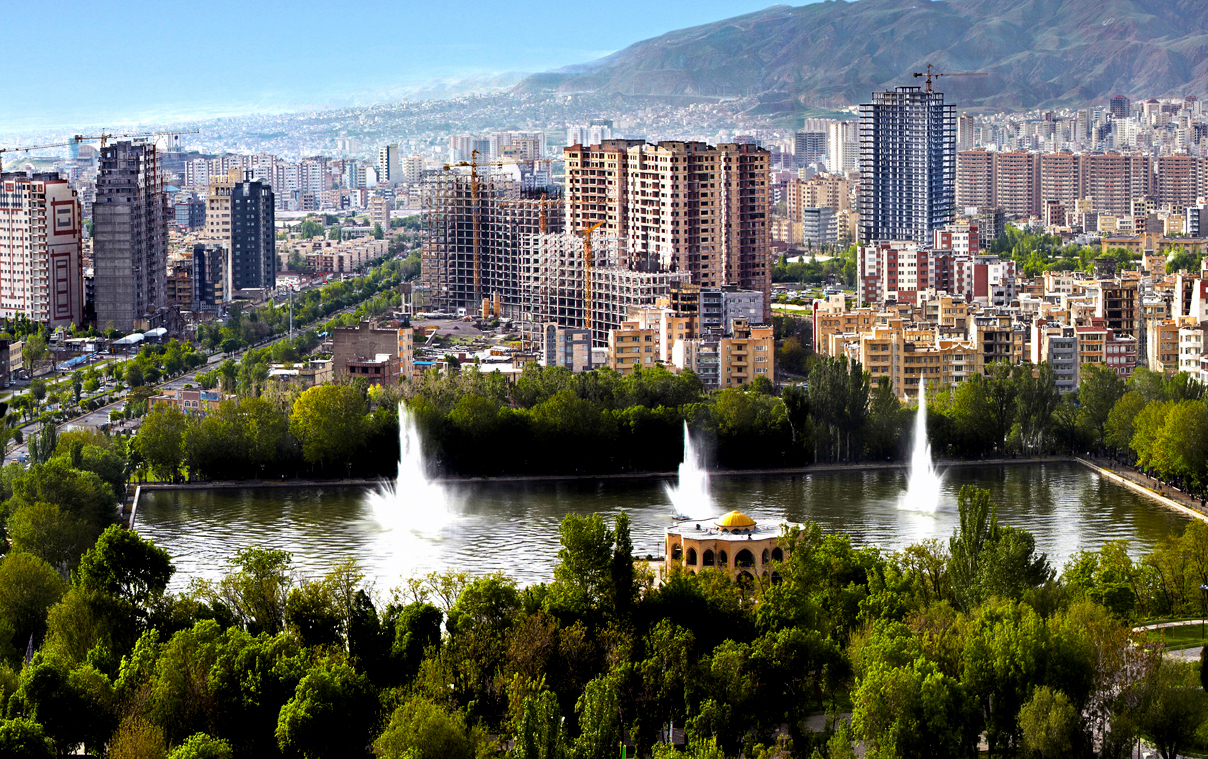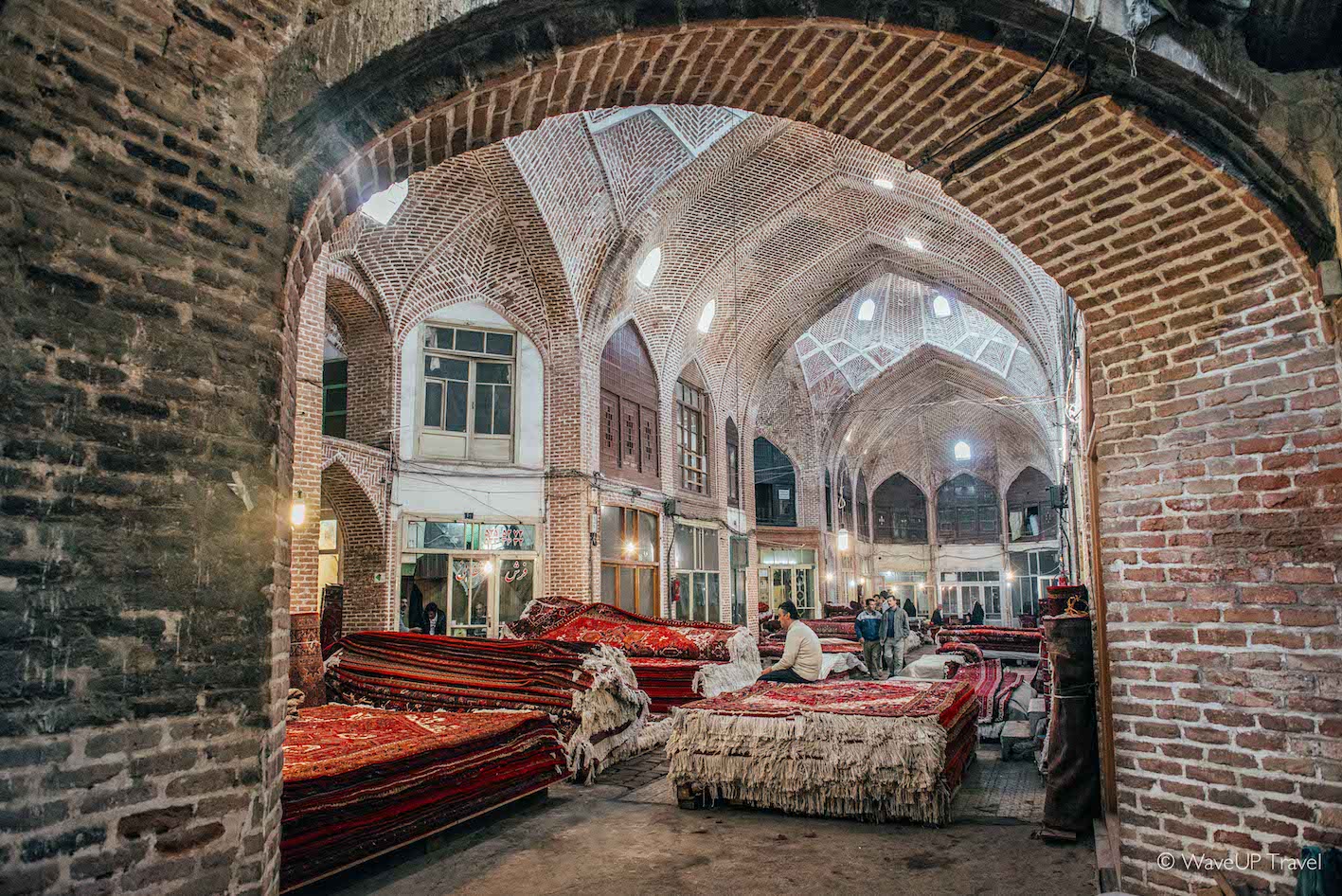Tabriz
Tabriz is the fourth largest city and one of the historical capitals of Iran and the capital of East Azerbaijan Province. Situated at an altitude of 1,350 meters at the junction of the Quru River and Aji River, it was the second largest city in Iran until the late 1960s, one of its former capitals, and residence of the crown prince under the Qajar dynasty. The city has proven extremely influential in the country’s recent history. Tabriz is located in a valley to the north of the long ridge of the volcanic cone of Sahand, south of the Eynali Mountain. The valley opens out into a plain that slopes gently down to the northern end of Lake Urmia, 60 kilometers (37 miles) to the west. With cold winters and temperate summers the city is considered a summer resort.
Early accounts
The early history of Tabriz is not clear yet. Some archaeologists suppose that the Garden of Eden was probably located in Tabriz. For the first time, Tarui or Tauris or Medes of are mentioned in Assyrian King Sargon II's epigraph in 714 B.C. Tabriz has been chosen as the capital for some rulers commencing from Atropates era and his dynasty. A recent excavation at the site of the Iron Age museum, in the north of the Blue Mosque site, uncovered a grave yard of first millennium B.C. This connects the history of civilization in the city to the first millennium B.C. It is more likely that the city was destroyed and rebuilt for several times either by natural disasters or by invaders. The earliest elements of the current city structure claimed to be built at either at the time of the early Sassanids in the 3rd or 4th century A.D., or later in the 7th A.D. century.
From the Muslim conquest to Qajars
After the conquest of Iran by Muslims, the Arabic Azd tribe from Yemen resided in Tabriz and development of post-Islamic Tabriz began as of this time. In 791 AD, Zubaidah, the wife of Abbasid caliph Harun al-Rashid, rebuilt Tabriz after a devastating earthquake and beautified the city so much as to obtain the credit for having been its founder. After the Mongol invasion, Tabriz came to eclipse Maragheh as the later Ilkhanid capital of Azerbaijan until it was sacked by Timur in 1392. Chosen as a capital by Abaqa Khan, fourth ruler of the Ilkhanate, for its favored location in the northwestern grasslands, in 1295, his successor Ghazan Khan made it the chief administrative center of an empire stretching from Anatolia to the Oxus River and from the Caucasus to the Indian Ocean. Under his rule new walls were built around the city, and numerous public buildings, educational facilities, and caravansaries were erected to serve traders traveling on the ancient Silk Road. The Byzantine Gregory Choniades is said to have served as the city's Orthodox bishop during this time. Marco Polo who traveled though the Silk Road passed Tabriz about 1275 describes it as: "...a great city surrounded by beautiful and pleasant gardens. It is excellently situated so the goods bring to here from many regions. Latin merchants especially Genevis go there to buy the goods that come from foreign lands..." From 1375 to 1468, Tabriz was the capital of Kara Koyunlu state in Azerbaijan, and from 1469to 1501 the capital of Ak Koyunlu state. Some of the existing historical monuments including Blue Mosque are belonged to Kara Koyunlu period. In 1501, Shah Ismail I entered Tabriz and proclaimed it the capital of his Safavid state. In 1514, after the Battle of Chaldiran, Tabriz was temporarily occupied by the Ottomans, but remained the capital of Safavid Iranian Empire until 1548, when Shah Tahmasp I transferred it to Qazvin. Between 1585 and 1603, Tabriz was occupied by the Ottomans but was then returned to the Safavids after which it grew as a major commercial center, conducting trade with the Ottoman Empire, Russia, central Asia, and India. In 1724–1725 the city was again occupied by the Ottomans, and two hundred thousand of its inhabitants were massacred. The city was retaken later by the Iranian army. In 1780, a devastating earthquake near the city killed over 200,000 which is regarded as 25th most deadly disaster of all times. During Qajar dynasty the city was the residence for the Crown Prince during. The crown prince normally served as governor of Azerbaijan province as well. One of the most important events in this period was the war between Iran and Russia. With the last series of the Russian-Iranian wars the city was captured by Russia in 1826. After signing the peace treaty the Russian army retreat from the city however the Russian political influence remained a major issue up to the fall of Russian empire. After retreat of Russian army Abbas Mirza, Qajar prince of crown, started a modernization scheme launched from Tabriz. He introduced Western-style institutions, imported industrial machinery, installed the first regular postal service, and undertook military reforms in the city. He rebuilt Tabriz and established a modern taxation system.
Contemporary age
Thanks to the closeness of the west and to communications with nearby countries' enlightenment movements, Tabriz became the center of the Iranian Constitutional Revolution movements between 1905 and 1911, which led to the establishment of a parliament in Iran. Sattar Khan and Bagher Khan two Tabrizi reformists who led Tabriz people's solidarity had a great role in achievement of this revolution.
Capital of Iran
Tabriz was chosen as the capital for the couple of rulers commencing from Atropates era. It was capital of Ilkhanate dynasty since 1265. During Ghazan Khan Era, who came into power in 1295, the city reached to its highest splendour. The later realm was stretched from Amu Darya in the East to the Egypt borders in the West and from the Caucasus in the North to the Indian Ocean in the South. It was again capital of Iran during Kara Koyunlu dynasty from 1375 to 1468 and then during Ak Koyunlu within 1468–1501. Finally, it was capital of the Iranian Empire within the Safavid period from 1501 until their defeat in 1555. During the Qajar dynasty, Tabriz was used as residence center of Iranian Crown Prince (1794–1925) (eachto.org).
El Göli
Shahgölü or Shahgöli has been the campus of former Qajar Dynasty's Crown Prince’s. Recently this has been called to be El Gölü or El Göli but most of the local people used to call it as Shah Gölü. In Qajar Dynasty period, Tabriz has been the 2nd capital of the Country and the prince has been the ruler of Tabriz. At the highlands of eastern gardens there is a pool of about 230 m by 230 m with a restaurant and coffee-shop at the center and a 5 star hotel at the eastern corner.

Tabriz Grand Bazaar
Tabriz Grand Bazaar is one of the greatest indoor markets in Iran and Asia. The Bazaar covers an area of one square kilometer, thus deserving the title ‘world greatest indoor market.’ It had been registered in UNESCO’s World Heritage List in 2010 as world’s first such market ever. Bazaar houses several souks, caravanserais, and temporary markets. In the past, Tabriz enjoyed a boom, since it hosted traders from Asia, Africa and Europe frequenting the city through the historical Silk Road. Tabriz Historic Bazaar has been rocking cultural exchange and commerce for millennia. Pin its staying power on location: it’s smack central on the old Silk Road, antiquity’s busiest trade route. Moroccan explorer Ibn Buttata visited and raved about the beautiful slaves who modeled jewelry to the wives of rich Turks. Marco Polo was a repeat customer (greenprophet.com).
Tabriz Historic Bazaar Complex, located along one of the most frequented east-west trade routes, consists of a series of interconnected, covered brick structures, buildings, and enclosed spaces for a variety of functions - commercial and trade-related activities, social gatherings, and educational and religious practices. Closely interwoven with the architectural fabric is the social and professional organization of the Bazaar, which has allowed it to function over the centuries and has made it into a single integrated entity.
Tabriz Historic Bazaar Complex has been one of the most important international places for commercial and cultural interchange, thanks to the centuries-old east-west trading connections and routes and to a wise policy of endowments and tax exemptions.
Tabriz Historic Bazaar bears witness to one of the most complete socio-cultural and commercial complexes among bazaars. It has developed over the centuries into an exceptional physical, economic, social, political, and religious complex, in which specialized architectural structures, functions, professions, and people from different cultures are integrated in a unique living environment. The lasting role of the Tabriz Bazaar is reflected in the layout of its fabric and in the highly diversified and reciprocally integrated architectural buildings and spaces, which have been a prototype for Persian urban planning (unesco.org).
